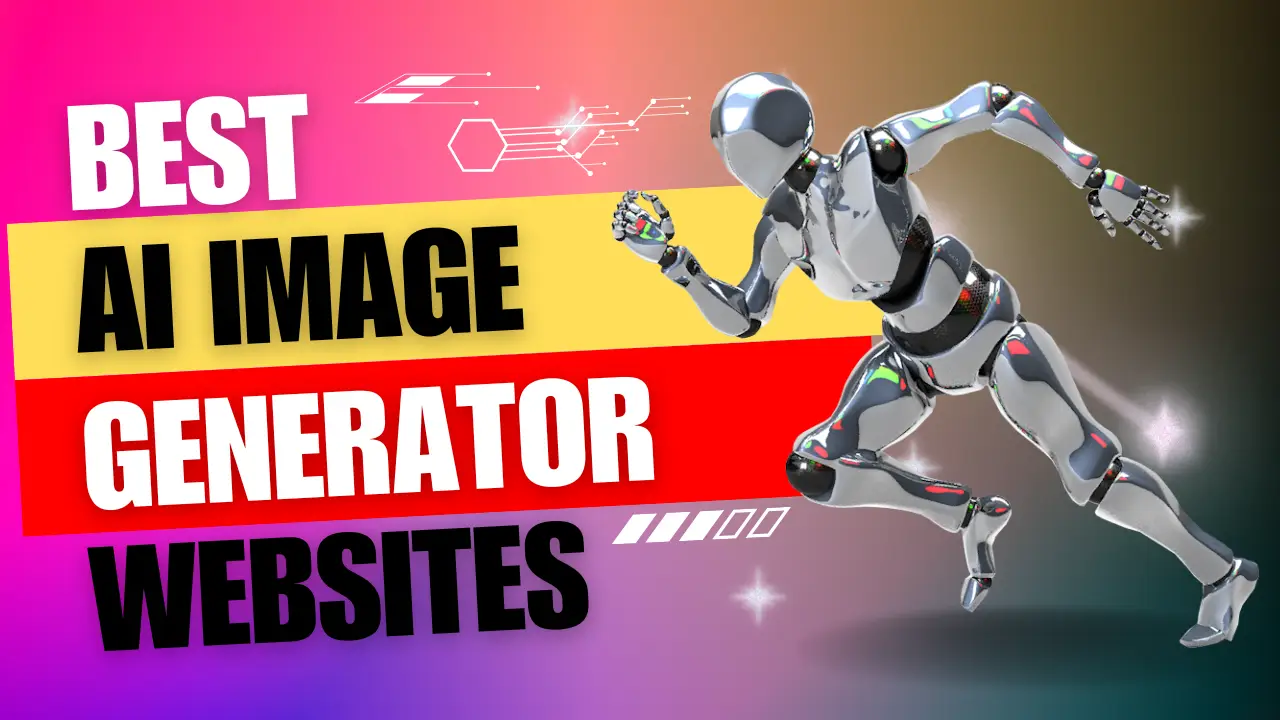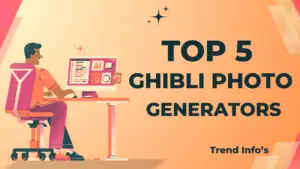We have Compared Top Tools for Artists, Designers, and Creators, that Explained in Detail, Below –
Artificial Intelligence (AI) has made a significant leap in the creative industry, especially in Image Generation. In 2025, AI Image Generators are more powerful, accessible, and user-friendly than ever before. Whether you’re a digital artist, a content creator, or a marketing professional, AI Image Tools can streamline your creative workflow, inspire new ideas, and save hours of manual design work. In this article, we explore The Best AI Image Generators in 2025, compare their features, pricing, and ideal use cases, and help you choose the right one for your needs.
What is an AI Image Generator?
An AI Image Generator is a tool powered by Artificial Intelligence and machine learning algorithms that creates images from text descriptions (also called “text-to-image” generators) or enhances/modifies existing images. These tools utilize deep learning models, such as Generative Adversarial Networks (GANs) and diffusion models, trained on massive datasets to generate high-quality, realistic, or artistic visuals.
Why Use an AI Image Generator in 2025?
AI Image Generators are being used across industries for several reasons:
Speed – Generates images in seconds.
Cost-effective – No need for expensive photoshoots or hiring artists.
Customization – Get tailored images from simple prompts.
Inspiration – Creative block? AI can offer fresh ideas.
Automation – Seamlessly integrate into design workflows.
Top 7 Best AI Image Generators in 2025
Midjourney
Overview – Midjourney remains one of the most popular AI Image Generators, particularly for those seeking high artistic quality. It runs on Discord and allows users to input prompts to create stunning, surreal images.
Strengths – Artistic and imaginative images, active community.
Limitations – Requires a Discord account, not ideal for realism.
Best For – Digital artists, fantasy designers, creative projects.
Pricing – Starts at $10/month.
DALL·E 3 (by OpenAI)
Overview – DALL·E 3 is the latest version from OpenAI and is now deeply integrated into platforms like ChatGPT. It can interpret complex prompts with high accuracy and generate visuals that match descriptions precisely.
Strengths – Realistic and accurate outputs, integrated into ChatGPT.
Limitations – May require ChatGPT Plus subscription.
Best For – Marketing, prototyping, ad creatives.
Pricing – Included with ChatGPT Plus ($20/month).
Adobe Firefly
Overview – Adobe Firefly is Adobe’s official AI Generator, built specifically for creators and integrated into tools like Photoshop and Illustrator.
Strengths – Integration with Adobe Suite, commercial-use safe.
Limitations – Requires Adobe subscription.
Best For – Graphic designers, professional creatives.
Pricing – Included in Adobe Creative Cloud plans.
Runway ML
Overview – Runway ML is a comprehensive AI tool for creatives that includes video editing, image generation, and more. It’s web-based and designed for ease of use.
Strengths – Video + image generation, collaborative features.
Limitations – Less focus on high-detail images.
Best For – Content creators, filmmakers, educators.
Pricing – Freemium; premium starts at $15/month.
Leonardo.Ai
Overview – Leonardo.Ai specializes in high-fidelity, game-style and product-design imagery. It’s loved by indie game developers and concept artists.
Strengths – Great for stylized visuals, intuitive UI.
Limitations – Limited free credits.
Best For – Game design, concept art, 3D artists.
Pricing – Free tier available; pro starts around $12/month.
Bing Image Creator (powered by DALL·E)
Overview – Microsoft’s Bing Image Creator is a free, web-based tool powered by DALL·E that allows quick text-to-image generation.
Strengths – Completely free, accessible, decent quality.
Limitations – Less creative flexibility.
Best For – Students, casual users, blog illustrations.
Pricing – Free with Microsoft account.
Stable Diffusion (via platforms like DreamStudio or local install)
Overview – Stable Diffusion is an open-source model that powers many AI image generators. You can run it on your own system or use platforms like DreamStudio.
Strengths – Full control, open-source, highly customizable.
Limitations – Requires some technical knowledge.
Best For – Developers, hobbyists, custom workflows.
Pricing – Free (self-hosted) or pay-per-use (DreamStudio).
Key Features that you have to Look in an AI Image Generator
If you want to choose the right AI Image Generator, then consider the following points:
Prompt Understanding – How well does it interpret your Text or Instructions?
Style Options – Can you adjust style, mood, lighting?
Resolution – Are the images high-quality and printable?
Ease of Use – Is the UI beginner-friendly?
Commercial Use – Are the images safe for monetized projects?
Speed – How fast is the generation process?
Community & Support – Is there an active user base or help center?
Use Cases for AI Image Generators
AI image generators are transforming workflows across industries:
Marketing – Create ad creatives, banners, and thumbnails.
Blogging & SEO – Generate unique featured images for articles.
E-commerce – Mockup product visuals and concepts.
Education – Visual aids, training materials.
Entertainment – Concept art for games, comics, and animations.
Social Media – Branded posts, story visuals.
Final Thoughts: Which One Should You Choose?
The Best AI Image Generator really depends on your goals –
Go for Midjourney if you want stunning, artistic visuals.
Choose DALL·E 3 (via ChatGPT) for reliable and intelligent image generation.
Use Adobe Firefly if you’re a designer working within the Adobe ecosystem.
Try Runway ML or Leonardo.Ai for creative video and concept art needs.
Want full control? Stable Diffusion is your go-to.
As AI continues to evolve, so will the capabilities of these tools. Keeping an eye on updates and experimenting with different generators will ensure you stay ahead in your creative journey.
Ready to explore your creativity with AI? Pick one of these tools and start generating today!

